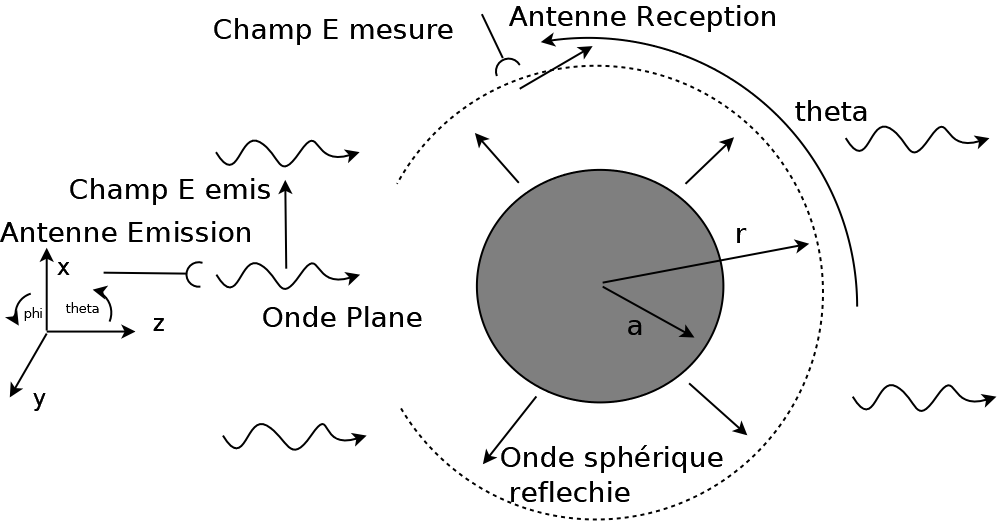Section: New Results
Identification of resonating frequencies of compact metallic objects in electromagnetic inverse scattering
Participants : Laurent Baratchart, Martine Olivi, Fabien Seyfert.
We started an academic collaboration with LEAT (Univ. Nice, France, pers. involved: Jean-Yves Dauvignac, Nicolas Fortino, Yasmina Zaki) on the topic of inverse scattering using frequency dependent measurements. As opposed to classical electromagnetic imaging where several spatially located sensors are used to identify the shape of an object by means of scattering data at a single frequency, a discrimination process between different metallic objects is here being sought for by means of a single, or a reduced number of sensors that operate on a whole frequency band. For short the spatial multiplicity and complexity of antenna sensors is here traded against a simpler architecture performing a frequency sweep.
The setting is shown on Figure 9. The total field is the sum of the incident field (here a plane wave) and scattered field , that is at every point in space we have . A harmonic time dependency (, where is the imaginary unit: ) is supposed for the incident wave, so that by linearity of Maxwell equations and after a transient state, following holds,
The subscripts and stand here for «observation point» and «emission point»: the scattered field at the observation point is therefore related to the emitted planar wave field at the emission point via the transfer function . The emission point is here supposed fixed, so the dependency in is omitted in . Under regularity conditions on the scatterer's boundary the function can be shown to admit an analytic continuation into the complex left half plane for the variable, away from a discrete set (with a possible accumulation point a infinity) where it admits poles. Thus, is a meromorphic function in the variable . Its poles are called the resonating frequencies of the scattering object. Recovering these resonating frequencies from frequency scattering measurement, that is measurements of at particular is the primary objective of this project.
In order to gain some insight we started a full study of the particular case when the scatterer is a spherical PEC (Perfectly Electric Conductor). In this case Maxwell equations can be solved «explicitly» by means of expansions in series of vectorial spherical harmonics. We showed in particular that in this case admits following simple structure:
where is a meromorphic functions with poles at zeros of the spherical Hankel functions and their derivatives and is independent of the frequency. Identification procedures, surprisingly close to the ones we developed in connection with amplifier stability analysis, are currently being studied to gain information about the resonating frequencies by means of a rational approximation of the function once it has been de-embedded. Generalization of this analysis and procedure will be considered for arbitrarily compact PEC objects.



